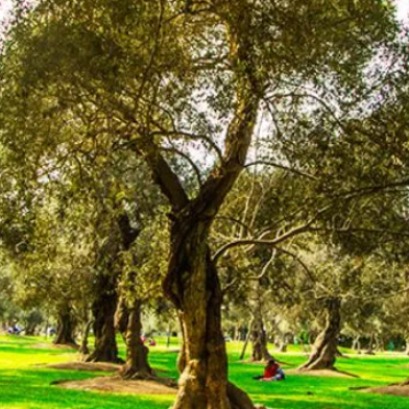
The city in South America that breathes thanks to a thousand olive trees planted in the 17th century
In the heart of South America there is a city that, among the noise and concrete, still breathes thanks to an olive forest
In the heart of South America, there is a city that breathes thanks to its olive trees. In the midst of the bustle, between avenues and modern buildings, a forest of olive trees keeps alive the memory of a country that still converses with its history. It is a place where the city stops to listen to the sound of the leaves and the sigh of time. We tell you how those trees were planted and where in South America they are found. The city in South America that breathes thanks to a thousand olive trees planted in the 17th century That city in the region of South America is Lima, capital of Peru, a metropolis that beats in front of the Pacific Ocean and keeps in its heart a green lung that seems to stop time: the El Olivar Forest, in the district of San Isidro. In the midst of the accelerated pace of the city, this natural space reminds us that the soul of A city can also be found under the shade of a tree. Its history dates back to the 16th century, when the Spanish knight Antonio de Rivera brought three olive tree seedlings from Seville. Only one survived, but its strength was enough to multiply and fill the landscape with more than a thousand trees. Tradition says that San Martín de Porres, the humble saint of Peru, planted one of these olive trees with his own hands in the 17th century. His gesture, born of love for the land and faith, symbolizes the humility that flourishes in the small. Since then, the Olive Grove trees have stood as guardians of time, breathing alongside the city and offering shade, air and beauty. What is this South American olive forest like? The place was declared an Environmental Conservation Area, which guarantees its care and preservation. More than 10 hectares of urban land preserve the harmony between nature, history and architecture. • Around 44 species of trees grow inside, although olive trees are the true protagonists. They represent about 85% of the total vegetation and were the first to take root in this Lima soil. • Among the trees, an Araucaria stands out, more than 40 meters high and nearly 80 years old, considered a heritage tree. Its presence is a column of time that connects past and present. • The El Olivar Cultural Center, the Municipal Library and the Marina Núñez del Prado House Museum operate in the surroundings of the trees, where art and history coexist with nature.
IT MAY INTEREST YOU
 Missions | New illegal felling in the Piñalito Provincial Park in San Pedro reveals the silent expansion of deforestation in protected areas
Missions | New illegal felling in the Piñalito Provincial Park in San Pedro reveals the silent expansion of deforestation in protected areas
The advance of deforestation on protected areas was once again evident this week in the Piñalito Sur Provincial Park, in San Pedro, where the Ministry of Ecology and Renewable Natural Resources confirmed a new case of selective illegal logging. The event occurs in a context of growing concern about the fragility of the environmental control system in rural and border areas, where the scarcity of resources, personnel and logistics limits the capacity of surveillance against criminal organizations organized to steal native woods and market them on the black market in connivance with sawmill owners.
 The second largest wetland in South America is located in Argentina: what is it?
The second largest wetland in South America is located in Argentina: what is it?
Argentina has national parks that place it in a unique position within South America, competing with 300 others. Which is the largest? South America is home to more than 300 national parks, but many go unnoticed. There are extensive wetlands that have been the subject of major ecological restoration projects, to coastal mountains with deep indigenous heritage. Today we tell you the case of one located in Argentina.
 Experts cant believe it, but this tree is the oldest in the world and continues to bear fruit: it is 4,000 years old.
Experts cant believe it, but this tree is the oldest in the world and continues to bear fruit: it is 4,000 years old.
Nature keeps secrets that defy the passage of time, and one of the most surprising examples is a tree that, approximately 4,000 years old, continues to bear fruit today. This specimen has become a symbol of resistance and longevity, capable of surviving climate changes, landscape transformations and human activity itself.




















